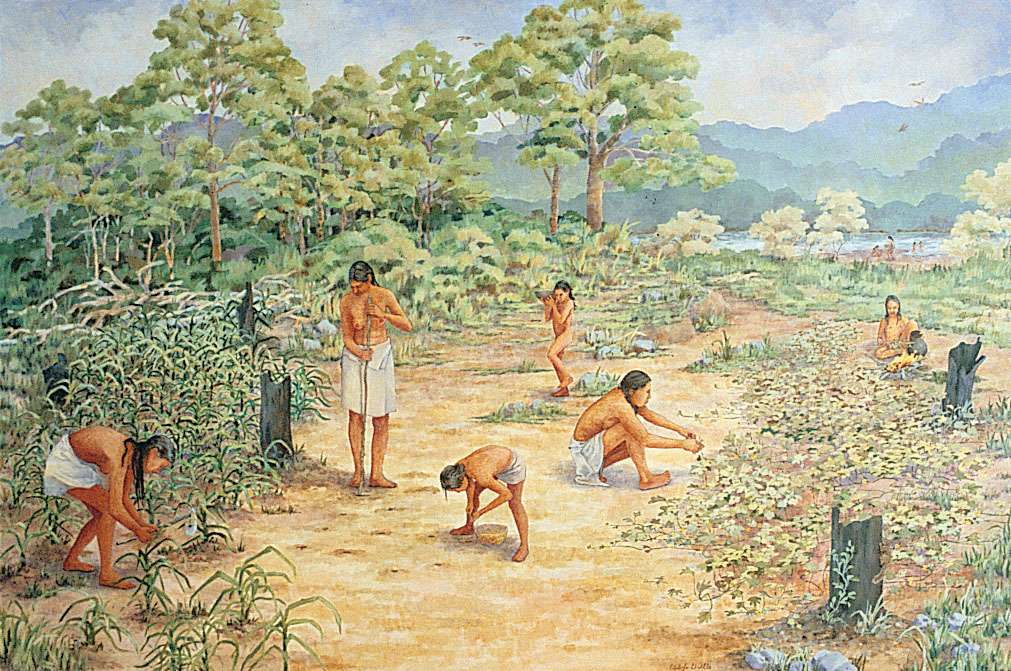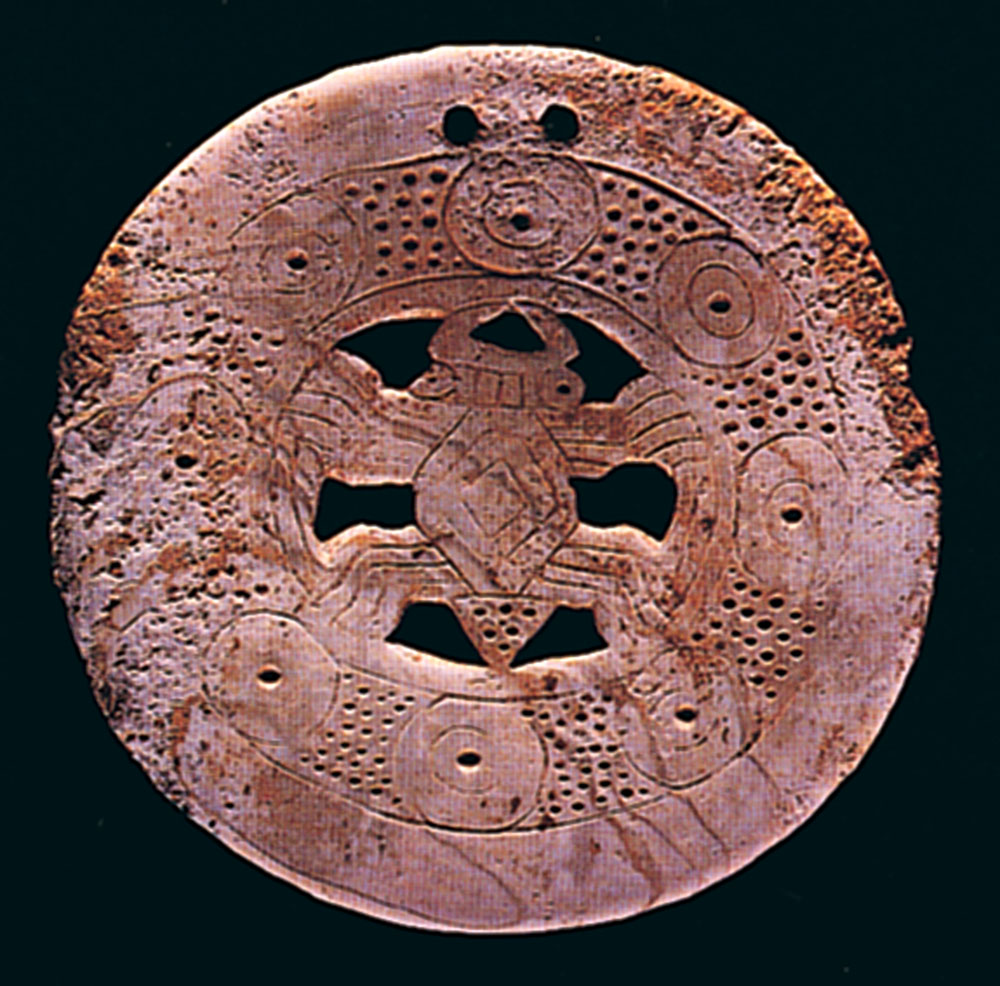Tennessee has a great variety of rivers, landforms, climate regions, and plant and animal species. Numerous groups of people have settled in Tennessee beginning with Native Americans about 12,000 years ago. The lasting impact of Native Americans can be seen in the number of places with Native American names. In fact, the name “Tennessee” comes from the Native American word “Tanasi.” Settlers came to Tennessee to take advantage of its abundant natural resources, so it seems fitting to begin by describing the land of Tennessee.
Tennessee divides naturally into three “grand divisions:” East Tennessee, Middle Tennessee, and West Tennessee. East Tennessee is an upland, often mountainous region. Middle Tennessee has foothills surrounding a lowland area known as a basin. The land of West Tennessee is part of the Gulf Coastal Plain. Travelers coming to the state from the east first encounter the towering Unaka and Smoky Mountains, followed by the Great Valley of East Tennessee. Moving across the Valley floor, they next face the Cumberland Plateau, which historically attracted little settlement and presented a barrier to westward migration. West of the Plateau, the terrain descends into the Central Basin of Middle Tennessee—a rolling, fertile countryside that drew hunters and settlers alike. The Central Basin is surrounded on all sides by the Highland Rim—the western ridge of which drops into the Tennessee River Valley. Across the river in West Tennessee begin the low hills and alluvial plain. An alluvial plain is formed from deposits of gravel, clay, and sand carried by a river. These geographical “grand divisions” correspond to the distinctive political and economic cultures of the state’s three regions.
Tennessee possesses a climate favorable for people and agriculture, with abundant rainfall and mild temperatures which create a long growing season for plants. The area is generally free from the long droughts and freezes found in some regions of the United States. The three major rivers that flow around and across Tennessee—the Mississippi, Tennessee, and Cumberland Rivers—have created watersheds that cover most of the state. A watershed is an area of land drained by a particular river or stream. The Tennessee River forms near Knoxville and flows in a southwesterly direction into Alabama, then loops back north to the Kentucky border. The Cumberland River drains northern Middle Tennessee, and West Tennessee is covered by a network of slow-moving streams, swamps, and lakes that flow directly into the Mississippi River. These rivers and the smaller streams that feed into them have played a significant role from the earliest times by providing fish and shellfish, by serving as major transportation routes, and by creating the areas of fertile soils that attracted farmers.


Fossils found in rocks across Tennessee show that the state was covered by warm, shallow seas in the distant past. Coal-bearing layers of rock are found throughout the Cumberland Plateau. Plant and dinosaur fossils are found in the sandstones of West Tennessee. Mammoths, mastodons, and giant sloths were driven south by the advancing glaciers of the Ice Age. Their remains can be found in West and Middle Tennessee.
The story of human presence in Tennessee begins with the last retreat of the Ice Age glaciers, when a colder climate and forests of spruce and fir covered the region. Late Ice Age hunters probably followed animal herds into this area about 12,000–15,000 years ago. These nomadic Paleo-Indians camped in caves and rock shelters and left behind their distinctive arrowheads and spear points. They may have used such Paleolithic or Stone Age tools to hunt the mastodon and caribou that lived in eastern Tennessee. The Coats-Hines site in Williamson County shows clear evidence of Paleo-Indians in Tennessee. Mastodon bones with cut marks and stone tools were discovered at the site. About 12,000 years ago, the region’s climate began to warm, and the vegetation changed from being mostly conifers to our modern deciduous forest. Large numbers of deer and elk were attracted to the abundant supply of mast, or food produced by oak, hickory, chestnut, and beech trees. Warmer climate, the extinction of the large Ice Age mammals, and the spread of deciduous forests worked together to transform Native American society.
During what is known as the Archaic period, descendants of the Paleo-Indians began to settle on river terraces. River terraces are areas of flat land raised above the valley floor. Archaic people gathered wild plant food and shellfish in addition to hunting game. Sometime between 3000 and 900 BC, natives took the crucial step of growing edible plants such as squash and gourds—the beginning of agriculture. Growing crops provided Archaic people with a dependable food supply and freed them from seasonal shortages of wild plant foods and game. With a more secure food supply, populations grew rapidly and scattered groups combined to form larger villages.


Woodland Indians farming in Tennessee. Painting by Carlyle Urello, courtesy of the Tennessee State Museum.
The next major stage of Tennessee prehistory lasted almost 2,000 years and is known as the Woodland period. During this era, Native people began to make containers and other objects out of clay. This craft is known as pottery. They also began to live in settled farming communities and to construct burial mounds. Wealth increased and Native society began to stratify, or divide, into different social classes. Native Americans in Tennessee made the transition from societies of hunters and gatherers to well-organized tribal, agricultural societies living in large, permanent towns. Pinson Mounds and Old Stone Fort were Woodland period sites. Pinson Mounds in Madison County was a ceremonial site with 17 mounds surrounded by an earth wall. Old Stone Fort in Coffee County was initially believed to be a defensive structure, but later studies have shown it was a ceremonial site as well.


The peak of prehistoric cultural development in Tennessee occurred during the Mississippian period (900–1600 AD). Population grew after the introduction of new varieties of corn and beans. As chieftains became more powerful, territorial warfare increased and ceremonial temples and public structures were built. The complexity of Mississippian society is seen in the elaborate pottery styles and personal items, such as combs, pipes, and jewelry, it produced. The Chucalissa site near Memphis is the most well known Mississippian mound in Tennessee.
People who do not have their own written language are often forgotten or known mostly from the documents written by their conquerors. This is what happened to the native inhabitants of Tennessee. Most of what is known about their culture comes from the writings of European Americans who often viewed Native American culture as inferior to their own culture. Disease, warfare, and the European fur trade had transformed Native American society long before white settlement reached the Tennessee country.
The Cherokee were not the first inhabitants of East Tennessee. Archeological evidence shows that East Tennessee had densely populated native communities prior to European contact. Native Americans in Tennessee began to grow maize, or corn, around 800–1000 AD. This development allowed towns and villages to grow rapidly. During the Mississippian period, organized chiefdoms developed in population centers such as Mound Bottom in Middle Tennessee and Toqua and Citico in East Tennessee. In 1540–1542, Hernando DeSoto led a group of 600 conquistadors, or Spanish soldiers, through the mountains into East Tennessee where he encountered the remnants of this civilization. Spanish entradas, or exploratory expeditions, led by DeSoto, Tristan de Luna, and Juan Pardo, came through the region between 1540 and 1567.
When the English and French began to explore the region 150 years later, the densely populated valleys and towns that DeSoto had found were gone or deserted. Historians are not certain what happened to these early inhabitants. The most likely explanation is that the Native Americans were wiped out by diseases such as smallpox and measles carried by the Spanish. Because Native Americans had never been exposed to European diseases, they had no natural resistance, or immunity, to the diseases. The introduction of European diseases to North and South America was one aspect of the Columbian Exchange. The Columbian Exchange refers to the exchanges of plants, animals, diseases, and technology between the Old World (Europe, Africa, and Asia) and the New World (North and South America) following Columbus’s voyage in 1492.
Some of the indigenous or native peoples, such as the Yuchi, remained, but they were driven out in the early eighteenth century by the Cherokee, who apparently migrated into the region after it was emptied by disease. There is evidence of a large-scale massacre at the Yuchi town of Chestowee in 1714. Cherokee hostility probably caused the Yuchi to abandon eastern Tennessee and settle further south in Georgia. The Yuchi people were one of the early tribes of eastern Tennessee. “Tanasi,” which gave its name to the state, may have originally been a Yuchi word, as was “Hogohegee,” the name given to the Tennessee River on many eighteenth-century maps.
The arrival of French explorers and Virginian traders in the mid-1600s marked the beginning of the end of Tennessee’s native culture. For the next hundred years, the trade in deer and beaver pelts was the main connection between European Americans and Native Americans. From the western reaches of Virginia and the Carolinas into what would be known as Tennessee, the Cherokee ruled, having earlier driven the Creek, Yuchi, and Shawnee from the region. They were the last native group to actually live in part of Tennessee. The colonial fur trade would change the Cherokee way of life forever. The system made the Cherokee dependent on European trade goods and led to the overhunting of game. At the same time, trade greatly increased intertribal warfare. It also drew the Cherokee into European wars, such as the French and Indian War at the end of the eighteenth century. Soon, Europeans would come seeking land, not deerskins, from the Native Americans.


